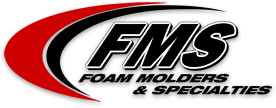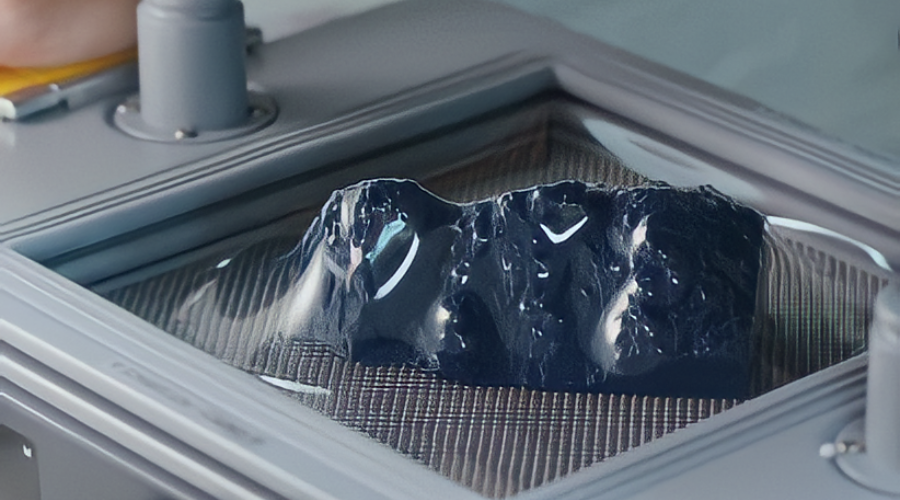Vacuum forming is one of the most popular methods of thermoforming. This is a method we use to create durable plastic parts for many uses. Typically, thermoforming consists of two methods – pressure forming and vacuum forming. Both of these methods are widely used for the production of plastic parts from sheets of plastic. But vacuum forming is a more popular form of molding because of the versatility it offers and the low costs.
Vacuum forming has a lot of advantages other than these, but there are certain drawbacks that make it suitable for some processes but not so much for others. Understanding vacuum forming in depth is key to knowing whether it’s the right process for you.
In this blog, we look at how Foam Specialties use Vacuum forming to produce parts for aviation, automobiles, and other such uses.
What’s Vacuum Forming?
Understanding how the process works is the best place to start. Vacuum forming is the process by which various plastic and foam parts and components are made from sheets of plastic. A thermoplastic sheet is held in place above a mold using clamps from all sides and then heated to its forming temperature. The ideal forming temperature depends on the type of plastic being used. Once the sheet reaches the right temperature, a vacuum is applied to the underside of the heated plastic sheet and it forms in the shape of the mold being used.
NOTE: <Adding a video here will be a great idea to show how the process works>
The finished parts will have to be cut out from the larger sheet using processes such as drilling, roller cutting press cutting. . This part of the process can only take place once the heated sheet cools down and sets into the shape of the mold sufficiently.
It can be used to create small and large parts depending on the need and can be created using a variety of materials. This is also a quick process, but since you cannot create multiple parts, it is not entirely suited for very large-scale production.
Normal vacuum forming can sometimes create a situation where the thickness of the final part being created is not uniform. Using additional parts like plug assists and drape assists can also help with the process. It helps in forming the plastic sheets into the shape of the molds with a much more even thickness which may be needed for some parts.
Vacuum forming can use both male and female molds. There is also the added advantage that the mold can be reused multiple times. Typically the molds are made of cast aluminum. You can also create casts from other materials such as wood, clay, and even plastic. Many manufacturers are also experimenting with 3D printing to create molds especially if the product is in the prototyping stage,
What Materials Can be Used for Vacuum Forming?
Vacuum forming can be used on a wide variety of materials making it a very versatile form of thermoforming. Some of the common materials used are as follows:
- Polycarbonate
- Acrylic (PMMA)
- Polyvinyl Chloride (PVC)
- High-density Polyethylene (HDPE)
- Polypropylene (PP)
- High-impact polystyrene (PS)
- Polyethylene terephthalate glycol (PETG)
- Acrylonitrile butadiene styrene (ABS)
- EVA and high-density Foam
Most of these materials are commonly used by manufacturers to create parts using thermoforming and Vacuum forming in particular.
Why is Vacuum Forming Ideal for Part Manufacturing?
For manufacturers, vacuum forming offers a very cost-effective option to make plastic parts at scale. It offers some significant advantages over other methods of forming. Lower Cost is certainly one of the biggest pros. Since the process works mainly using air pressure, the energy requirement for the process is relatively low and is mainly for heating the plastic materials.
The vacuum forming process also doesn’t need a great deal of heavy machinery. All you need is a heating mechanism and a vacuum pump which is why a lot of enthusiasts make DIY vacuum forming machines. Industrial machines are also not very complex and is this a very budget-friendly process.
The other advantage is that the process is fairly flexible and can be used to create intricate parts based on the mold. This process can be used to create very large parts and it can also be used to create smaller components based on the requirements. The variety of materials that can be used as vacuum-forming plastic is another aspect in its favor.
Manufacturing parts no longer requires expensive, time-consuming processes. Companies often select vacuum forming for various reasons, including the following:
Versatility
Vacuum forming is a remarkably versatile process that can produce parts of diverse shapes and sizes. Whether simple shapes or intricate designs, vacuum forming can handle various requirements. This technique is used in numerous sectors, from custom packaging to automotive components.
Cost-Effectiveness
For manufacturers, cost-effectiveness is often a critical consideration. Vacuum forming excels in this area due to several factors. The relatively low tooling costs make it an attractive choice for small to medium-scale production runs. Since the molds are typically made from inexpensive materials like wood or epoxy, initial setup expenses are significantly reduced compared to other molding techniques.
Moreover, vacuum forming minimizes material wastage. The process uses only the necessary amount of thermoplastic material to create the part, reducing excess scrap and optimizing material usage.
Rapid Prototyping and Short Lead Times
In today’s fast-paced world, rapid prototyping is crucial for product development. Vacuum forming facilitates quick, efficient prototyping, allowing manufacturers to test and refine their designs promptly. By swiftly creating prototypes and iterating as needed, companies can bring their products to market faster, gaining a competitive edge.
Short lead times are another advantage of vacuum forming. Once the mold is prepared, production can begin almost immediately. This quick turnaround time enables manufacturers to respond swiftly to changing market demands and stay ahead of their competitors.
What are the Issues with Vacuum Forming?
Naturally, it has some drawbacks too. Vacuum forming is not exactly suitable for a large-scale manufacturing process where thousands of parts have to be made in a day. Since you can create just one part at a time, scaling up production to higher levels may be a challenge.
One other major issue is the thickness of the parts. Since vacuum forming stretches the plastic sheet during the thermoforming process over the mold. the thickness of the sheet can vary. The part where it stretches the most will have the lowest thickness. Non-uniform wall thickness can be managed by taking extra care in heating the plastic and using additional components when you apply the vacuum.
Moisture is another problem element. If there’s excess moisture on the sheet or in the mold, this can form air bubbles when you are forming the sheet. This makes vacuum-formed parts brittle and affects the quality of the final part.
What Materials do Foam Molders Make with Vacuum Forming?
We at Foam Molders are experts in vacuum forming. We help our clients design the parts, build tooling for these parts, and also manufacture the parts. Our attention to detail and knowledge of materials help our clients get the best value for their budgets. We use vacuum forming to create a wide variety of products. We serve a lot of industries too, including aerospace, automobile, consumer goods, office products, and medical industries.
A variety of vacuum-formed products are also available in the market, which we help build. Some of these include fuel tanks, fenders, door inner liners, electrical enclosures, bins, prostheses, boat hulls, canoes, and more.
There is also some special work that we undertake with our clients that showcase what we can do with vacuum molding. Here are a few specific examples.
Aircraft Parts
Aircraft parts need to be lightweight, durable, compact, and able to withstand the pressures of operating at various atmospheric pressures. Getting the parts right is a priority as there is very little room for error. We use vacuum forming to create air duct covers, engine plug covers, electrical enclosures, control boxes, and much more.
Most of these have multiple intricate parts that need to be assembled post-forming. We use fiberglass and epoxy molds to create these parts. We also focus on designing the molds with ultimate precision and attention to detail in everything we do. Due to this, all the products are of great quality and function exactly as planned.
Auto Parts
Another major use case for vacuum forming comes from the auto industry. There are a lot of parts that make their way to the auto industry that are made using vacuum forming. We have worked with our clients to produce center consoles that house the entire dashboards for cars, and smaller parts such as fenders, cup holders, and interior paneling.
These complex parts are created from high-quality materials, precision-designed molds, and with a lot of care and attention to meet the stringent quality criteria, we set for ourselves as well as for our clients.
Medical Products
Many medical products that need to be in sterile environments are created using vacuum forming. We have worked with clients in the medical industry to produce parts for machinery such as MRIs, medical beds, and pill containers using vacuum forming. Given the emphasis on quality, we use the best materials and molds to build these medical products.
Closing Thoughts
Vacuum forming is a very versatile process that is used to produce a variety of parts we use in our everyday life. We at Foam Molders have relied on vacuum forming to help our clients design and build durable parts of high quality. By using the right material and following the right process, it is possible to create reliable parts using vacuum forming consistently.
Want to know more about vacuum forming and how we can help you get the right parts for your business? Get in touch with us today!

